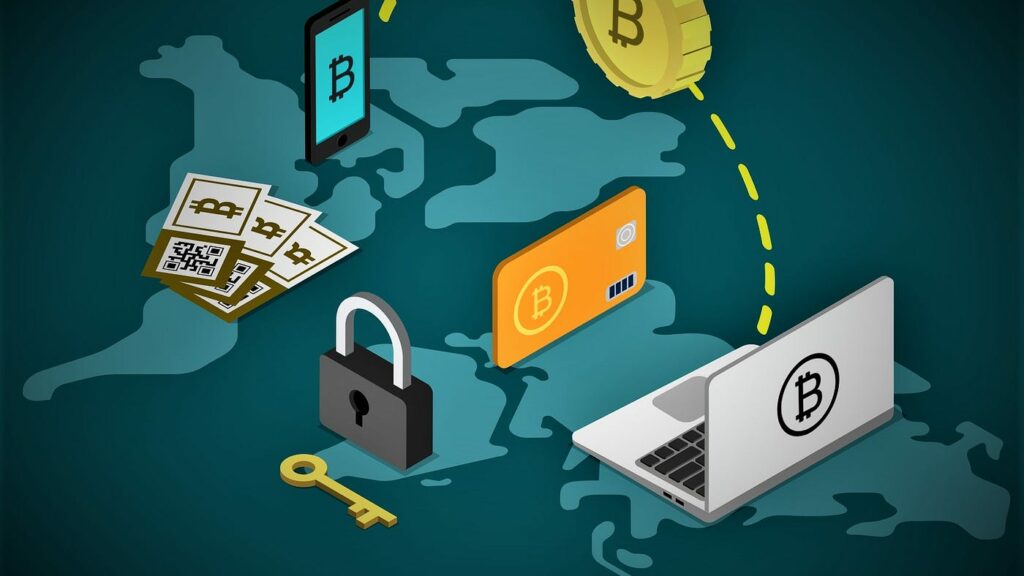
Introduction
The world is becoming increasingly interconnected, and as a result, cross-border transactions have become an integral part of global business and personal finances. However, traditional methods of conducting cross-border transactions often suffer from limitations such as high fees, slow processing times, and currency conversion challenges. In recent years, altcoins have emerged as a promising solution to these issues, revolutionizing the way we conduct cross-border transactions. So, if you are new to investment and want to learn about it, you must visit an investment educational firm such as immediate-edge.software
The Limitations of Traditional Cross-Border Transactions
Traditional cross-border transactions through banks or other financial institutions come with their own set of challenges. High fees and slow processing times can significantly hinder the efficiency and speed of transactions. Additionally, the need for currency conversion introduces complexities and costs that can further delay and complicate the process. Moreover, a significant portion of the global population, particularly the unbanked, faces limited accessibility to traditional banking services, making cross-border transactions even more challenging for them.
Altcoins and Their Role in Cross-Border Transactions
Altcoins, or alternative cryptocurrencies, have gained traction as viable alternatives to traditional currencies for cross-border transactions. These digital assets are built on blockchain technology and offer several advantages over traditional methods.
Altcoins provide faster transaction speeds and lower fees compared to traditional banking systems. By utilizing blockchain technology, altcoins enable peer-to-peer transactions without the need for intermediaries, reducing processing times and associated costs. This makes cross-border transactions more efficient and cost-effective for individuals and businesses alike.
Another key benefit of altcoins in cross-border transactions is their ability to facilitate seamless currency conversion. Stablecoins, which are a type of altcoin pegged to a stable asset like fiat currency, offer a reliable and instant way to convert funds across different currencies. This eliminates the need for multiple conversions and minimizes the risk of exchange rate fluctuations, providing users with greater financial certainty.
Ripple (XRP) and Its Cross-Border Payment Solutions
Ripple (XRP) is an altcoin that focuses on improving cross-border transactions through its innovative payment solutions. Ripple’s technology, known as RippleNet, enables fast and low-cost cross-border payments by eliminating the need for lengthy correspondent banking networks. With XRP as a bridge currency, Ripple facilitates near-instantaneous transfers with minimal fees, making it particularly beneficial for remittance services. Ripple’s cross-border payment solutions have gained traction in revolutionizing the global payments industry and providing efficient and cost-effective alternatives to traditional methods.
Stellar (XLM) and Its Cross-Border Remittance Network
Stellar (XLM) is an altcoin that aims to improve cross-border remittances through its innovative network. Stellar’s decentralized platform allows for low-cost and fast cross-border transactions, making it an attractive option for individuals and businesses. By leveraging its unique consensus algorithm and a network of trusted anchors, Stellar ensures secure and efficient transfers. With its focus on financial inclusion, Stellar provides a solution for individuals in underserved regions who heavily rely on remittance inflows. Overall, Stellar’s cross-border remittance network offers an inclusive and accessible platform for seamless international transactions.
Litecoin (LTC) and Its Fast and Cheap Transactions
Litecoin, often referred to as the silver to Bitcoin’s gold, is a well-established altcoin that offers fast and cost-effective transactions. With its shorter block generation time and a different hashing algorithm than Bitcoin, Litecoin provides quicker transaction confirmations, making it suitable for cross-border transactions that require timely settlement.
Litecoin’s low transaction fees also contribute to its appeal for cross-border use cases. Its integration into payment processors and merchant services further expands its utility, allowing businesses to accept Litecoin as a form of payment for international transactions. This increases the accessibility and adoption of Litecoin in cross-border trade.
Binance Coin (BNB) and Its Role in Cross-Border Trade
Binance Coin (BNB) is the native cryptocurrency of the Binance exchange, one of the largest and most prominent cryptocurrency exchanges globally. While primarily used as a utility token within the Binance ecosystem, BNB has gained traction in facilitating cross-border trade.
Binance Coin offers several advantages for cross-border transactions, including low fees, fast processing times, and seamless integration with the Binance exchange. With BNB, users can access various trading pairs and liquidity, making it convenient for individuals and businesses engaging in international trade.
Conclusion
Altcoins are revolutionizing cross-border transactions by offering faster, cheaper, and more accessible alternatives to traditional banking systems. With their unique features and benefits, altcoins like Ripple, Stellar, Litecoin, and Binance Coin are paving the way for a more inclusive and efficient global financial landscape.
While challenges such as regulatory uncertainty and security concerns exist, ongoing developments in technology and increased collaboration between altcoin projects, financial institutions, and regulators are driving the adoption of altcoins in cross-border transactions.








